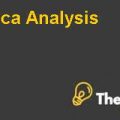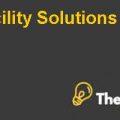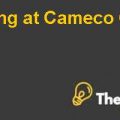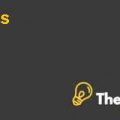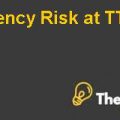
Question # 01: Why does Dow want to buy Rohm and Haas? Was the $78 per share bid reasonable?
Answer:
Rohm and Haas acquisition with Dow bring synergies as well as this would increase the efficiency of the company, introduce new technologies, and help the company in product development and advancement. Rohm and Haas would be the strong operational and strategic option to acquire for Dow, and it would be better option for the company to expand the business in the emerging markets. The global market entrance would also increase the revenue, synergies and diversifies the business portfolio with significant growth opportunities for the business. The acquiring company also has a strong team, whose focus is on innovation and product development, and the objective is to transform the company to high value especially in chemicals and as an advance material producer, which shows that Rohm and Haas with Dow is the better option of merger.
The $78 bid price is more than the enterprise value of the company that is $59.11 per share, if the original data forecast of the company is used, and if the revised forecasted is used then the enterprise value of the company is $42.60 per share, which indicates that the $78 is more than the intrinsic value of the company. The enterprise value is calculated on the basis that weighted average cost of capital is assumed to be 8.5 percent and the growth is 2 percent. If the weighted average cost of capital is assumed to at the upper limit that is 9.5 percent than the original forecasted per share enterprise value of the company is $56.74 and it would be $61.71 per share, if the per share enterprise value is calculated the lower limit of weighted average cost of capital that is 7.5 percent. The revised forecast per share value is $44.79 if the weighted average cost of capital is 7.5 percent and per share value is $40.63, if the weighted average cost of capital is 9.5 percent. Dow should negotiate with the merging company for the bid price as Rohm and Haas is the better option for the company to merge.
Question # 02: What are the major deal risks inherent in this merger transaction? How and to whom does the merger agreement allocate these key risks? Hint: analyze the various provisions in case Exhibit 4. What risk does each provision address and which party ultimately bears the risk?
Answer:
There are many risks which are concerned with this deal since the merger transaction occurs. These risk caters with the depth analysis of the case and their respective parameters. The Inherent Risk are as follows
- Delay or Non presentation of the acquisition/deal
- Risk of Authority aliens to one or both of the companies
- The deal has discarded due to the situation of Rohm`s Control
- Competitive Bids evolving the others buyers
- Mistaken Delay or Intentional Delay Performance
- Timing closure of the Bids
These risks are associated with the company’s environment and their surroundings. The main effect of these risks which are mentioned above arises due to the changes in the environment with the technological effects and their respective parameters which influence the atmosphere of the market norms.
How and to whom does the merger agreement allocate these key risks?
These risks are allocated to different stakeholder of the company with respect to the deal effects. The first risk is allocated to the Dow, because it applies the damages and fees with respect to the party condition. The second risk, allocate the both parties of the transaction. The third risk is in the favor Rohm and GS & Co is responsible for the valuation concern with respect to the financial Perspective. The fourth risk is in the favor of Dow and this time Rohm would be responsible for petition of bids with any form. The fifth and sixth risk is favored both parties by making both the responsibility to undertake all the actions which are coming necessary for the operations. The last one addressing the non-approval stakeholder/antitrust of the company. These are the things which are allocated with the risk factors which are the key for the guideline. These are done with respect to the Exhibits Four.....................
This is just a sample partial case solution. Please place the order on the website to order your own originally done case solution.


